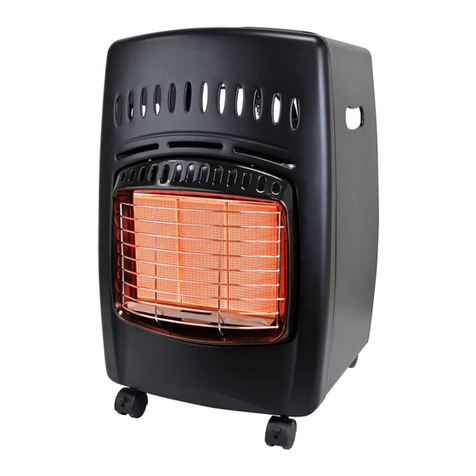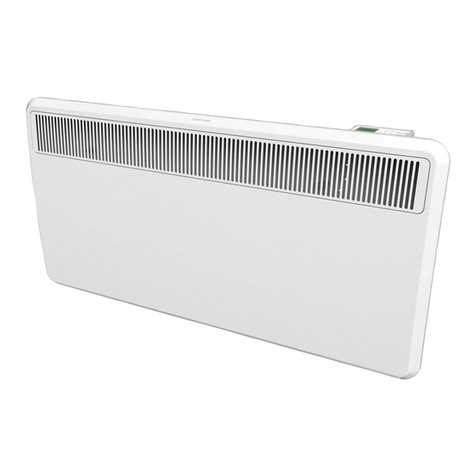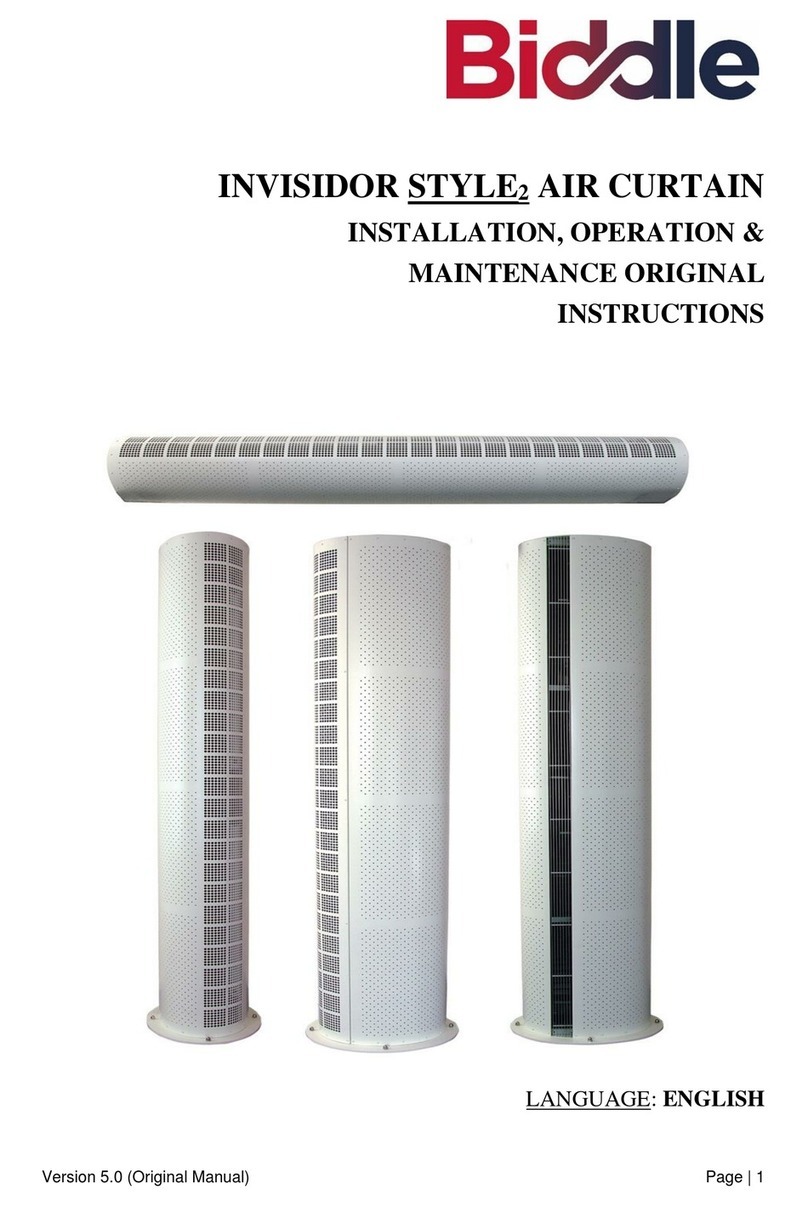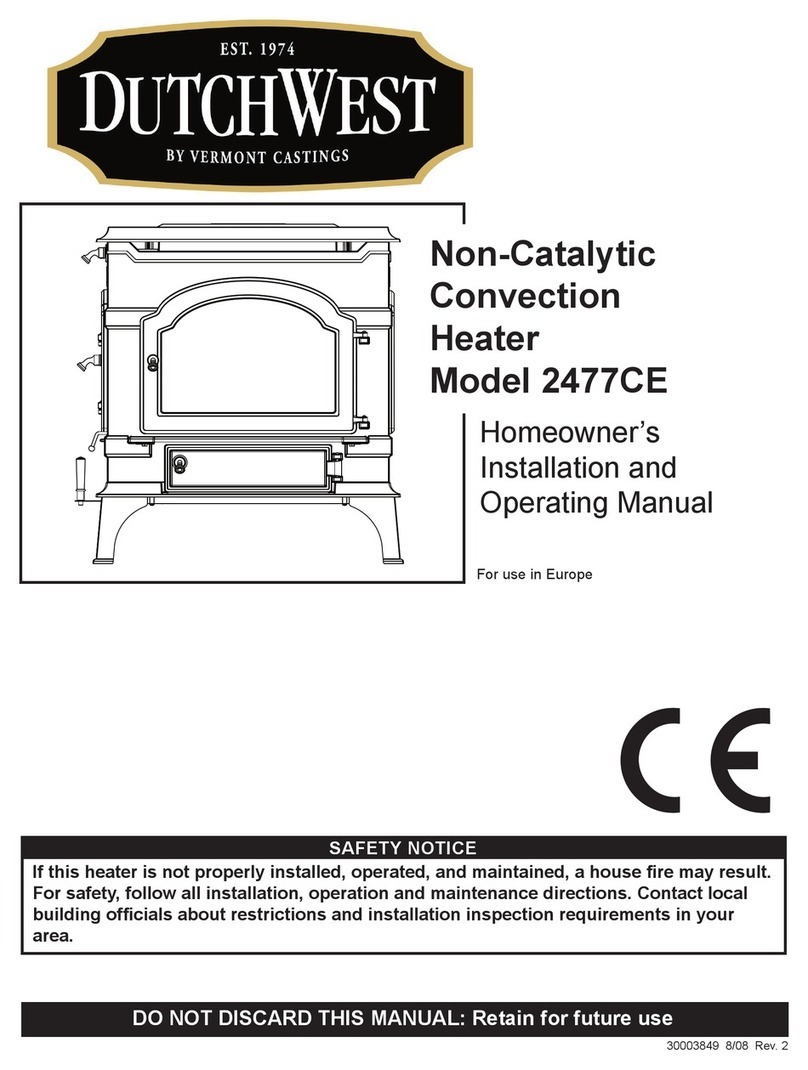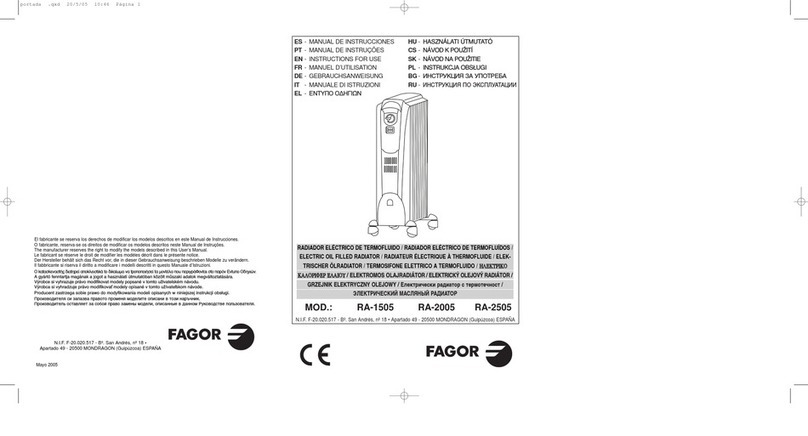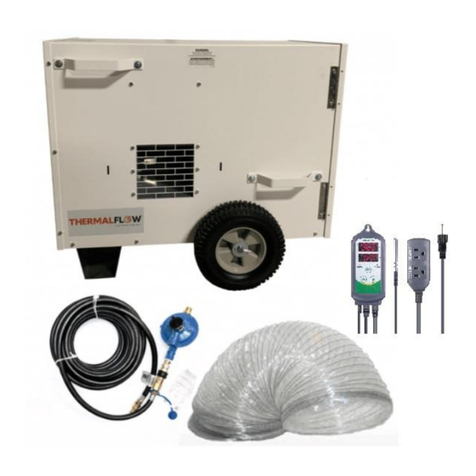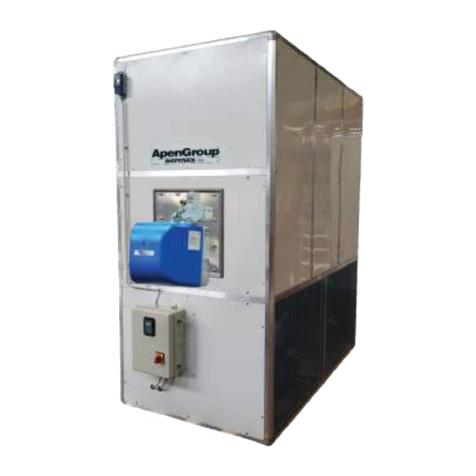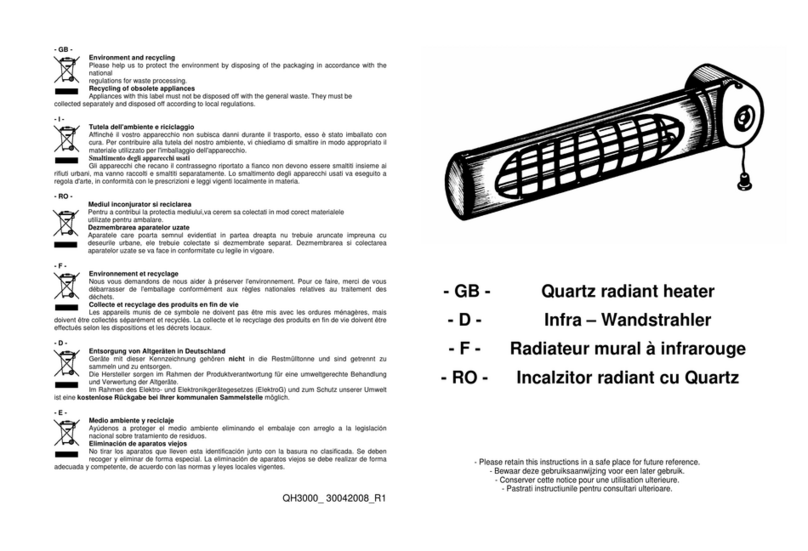
GB
10
GENERAL RECOMMENDATIONS
The hot air generators run on diesel fuel. Those with direct com-
bustion send hot air and the combustion products into the room, while
those with indirect combustion are fitted with a flue to take the fumes
away through the chimney.
Always follow local ordinances and codes when using this heater:
• Read and follow this owner’s manual before using the heater;
• Use only in places free of flammable vapours or high dust con-
tent;
• Never use heater in immediate proximity of flammable materials
(the minimum distance must be 2 m);
• Make sure fire fighting equipment is readily available;
• Make sure sufficient fresh outside air is provided according to
the heater requirements. Direct combustion heaters should only
be used in well vented areas in order to avoid carbon monoxide
poisoning;
• the generator is installed near a chimney to take away the fumes
(see the paragraph “FUMES FLUE POSITIONING DIAGRAM”) and
connected to an electrical switchboard;
• Never block air inlet (rear) or air outlet (front);
• In case of very low temperatures add kerosene to the heating oil;
• Make sure heater is always under surveillance and keep children
and animals away from it;
• Before starting the heater always check free rotation of ventilator;
• Unplug heater when not in use.
OPERATION
Before any attempt of starting the heater is made, check that your
electrical supply conforms to the data on the model plate.
Warning
For models “DV,” check th t the rrows on the volt ge
supply selector key cover (Fig. 1) re pointing to the vol-
t ge v lue required.
Fig. 1
If necess ry:
• remove the cover;
• press deflector (18) to the position required;
• repl ce the protective cover.
Attenzione
To oper te the m chine, must inst ll the ir dispersion
cone (18) on the front of the m chine s shown in the fi-
gure bove (“Oper ting di gr m”).
Warning
M ins must be fitted with thermo-m gnetic differren-
ti l switch.
Unit plug must be linked to socket with m ins
switch.
You can run the generator in manual by setting switch (14) to ON.
The generator can only work automatically when a control device,
such as for example a thermostat or a timer, is connected to the gener-
ator. Connection to the generator is made by removing the socket cover
(15) and inserting the thermostat plug.
To start the machine you must:
• if connected to the thermostat, turn the switch to (ON + );
• if not connected to the thermostat, turn the switch to (ON);
When unit is started for the first time or is started after the oil tank
has been totally emptied, the flow of oil to the burner may be impaired
by air in the circuit. In this case the control box will cut out the heater
and it might be necessary to renew the starting procedure once or
twice by depressing the reset button (13).
Should the heater not start, check that oil tank is full and depress
reset button (13).
Should the heater still not work, please refer to chapter “OB-
SERVED FAULTS, CAUSES AND REMEDIES”.
STOPPING THE HEATER
Set main switch (14) on “0” position or turn thermostat or other
control device on lowest setting.
The flame goes out and the fan continues to work for approx. 90
sec. cooling the combustion chamber.
SAFETY DEVICES
The unit is fitted with an electronic flame control box. In case of
malfunction this box will cut in and stop the heater, at the same time
the pilot lamp in the control box reset button (13) will light up.
Heaters are also equipped with an overheat thermostat safety cut
out which will stop the heater in case of overheating. This thermostat
will reset automatically but you will have to depress button (13) on
control box before being able to restart the heater.
TRANSPORT
Warning
Before m king ny ttempt to rest rt he ter find nd
elimin te re son of overhe ting.
Before heater is moved it must be stopped and unplugged. Before
moving the heater wait till it has totally cooled off and make sure oil
tank cap is securely fixed.
The hot air generators with wheels must be wheeled. The sus-
pended version which has no wheels must be transported with ade-
quate machinery.
MAINTENANCE
Preventive and regular maintenance will ensure a long trouble free
life to your heater.
Warning
Never service he ter while it is plugged in, oper ting or
hot.
Severe burns or electric l shock c n occur.
Every 50 hours of operation: disassemble filter and wash with
clean oil, remove upper body parts and clean inside and ventilator with
compressed air, check correct attachment of H.T. connectors to the
electrodes and check H.T. cables, remove burner assembly, clean and
check electrode settings, adjust according to scheme “REGULATION
OF ELECTRODES”.
IMPORTANT
Before using the heater, read and understand all instructions and follow them carefully. The manufacturer is not responsible for
damages to goods or persons due to improper use of units.
240 V
110 V
240 V
110 V
240 V
110 V
240 V
110 V

